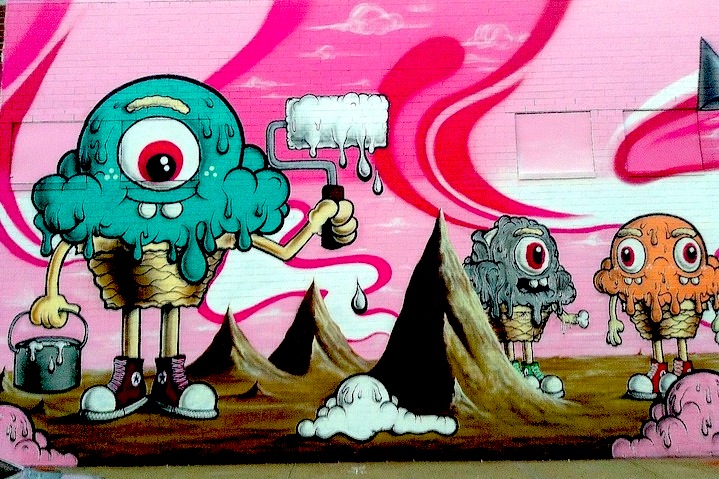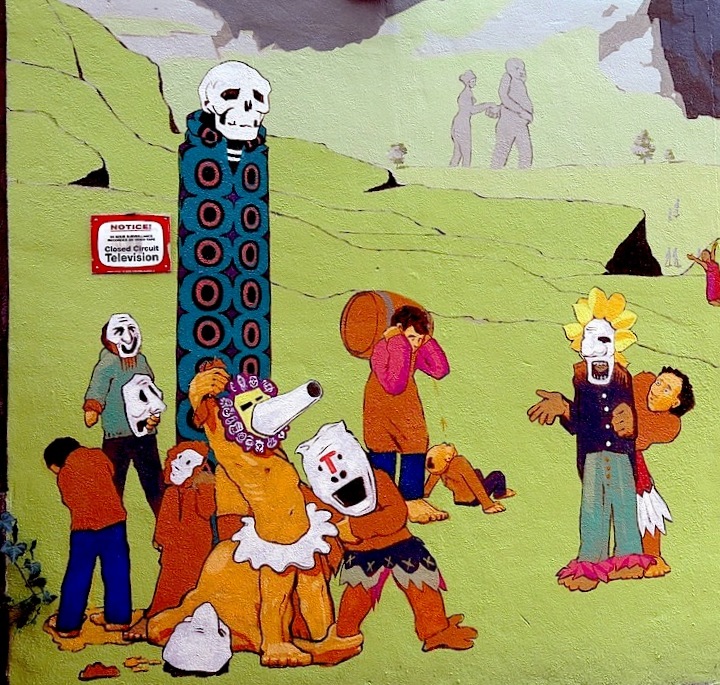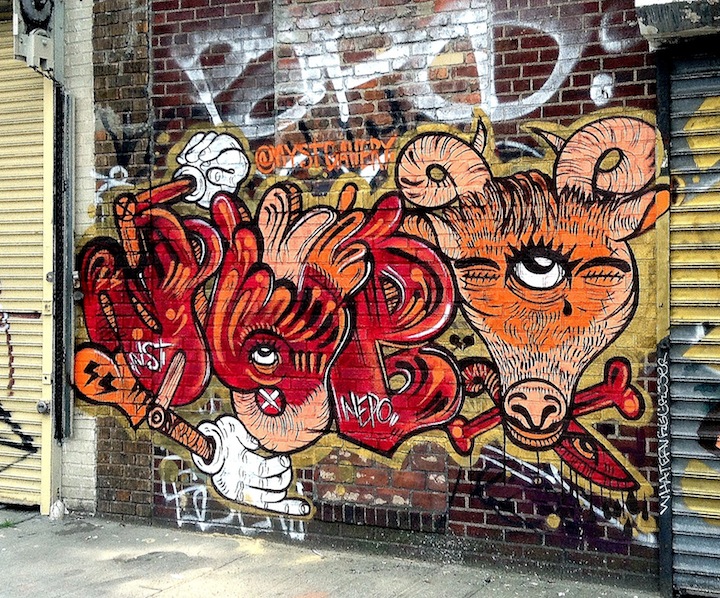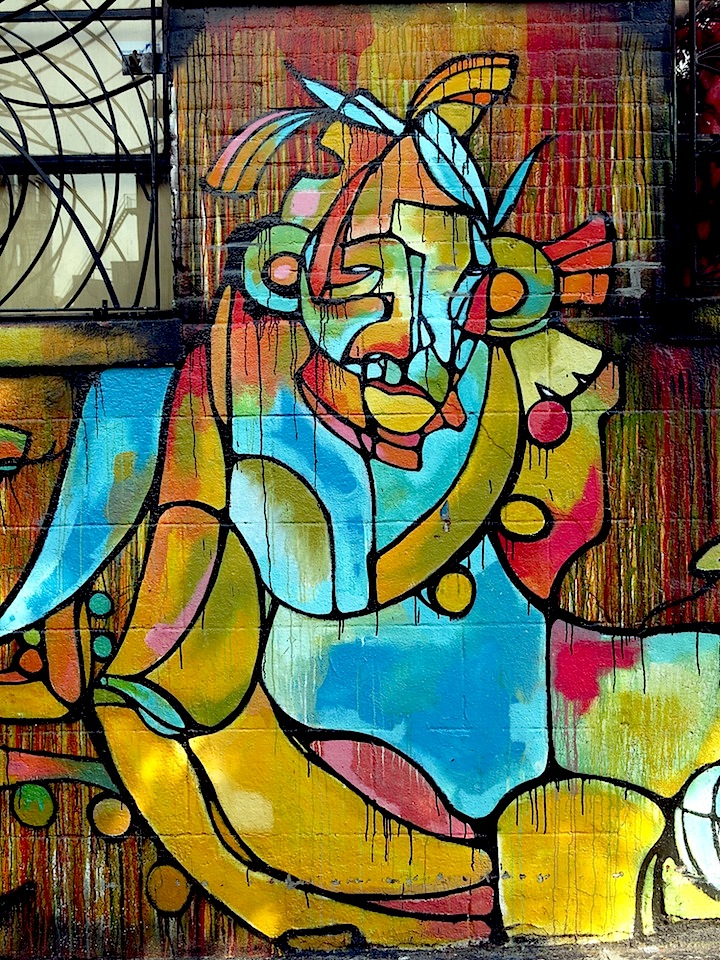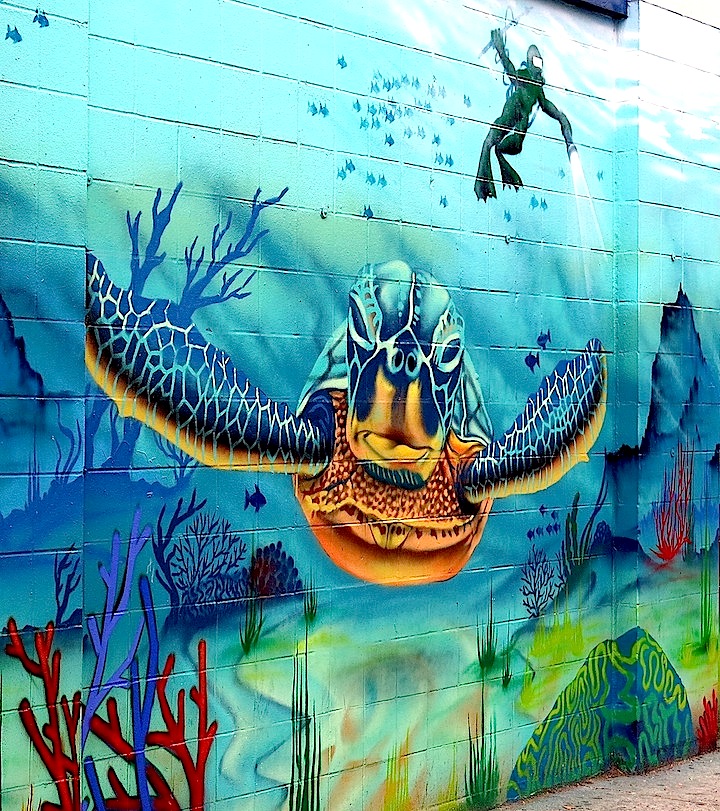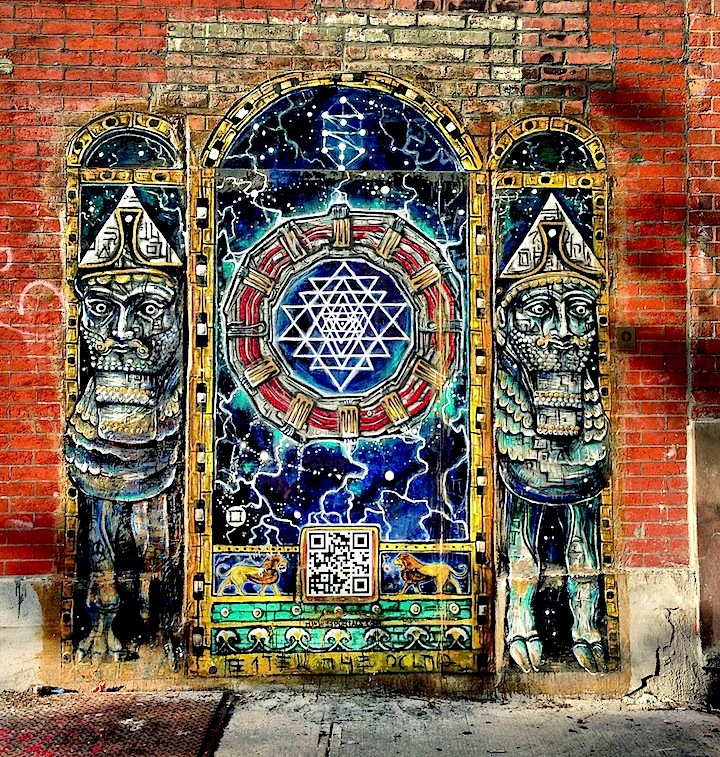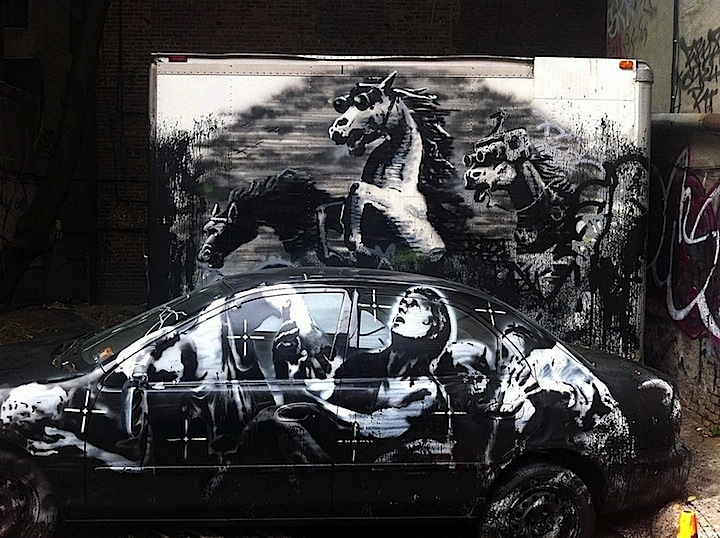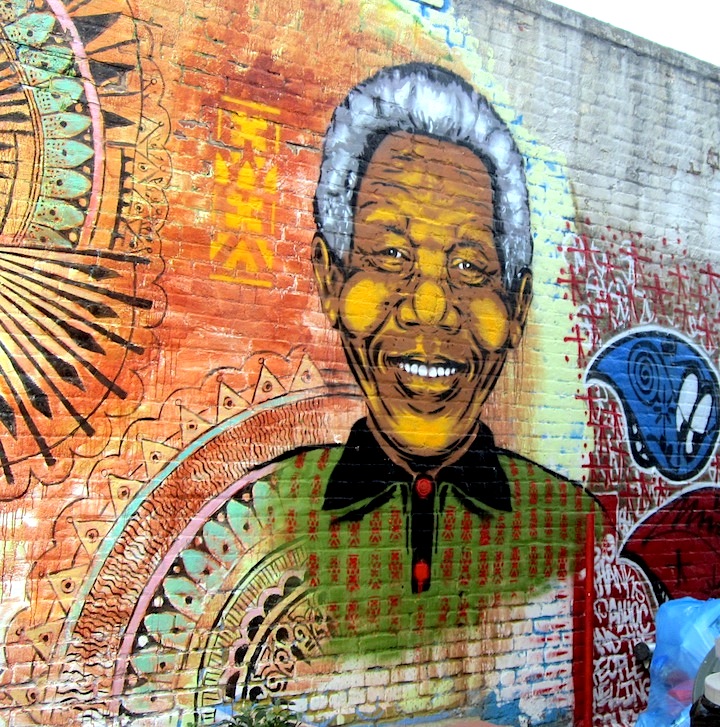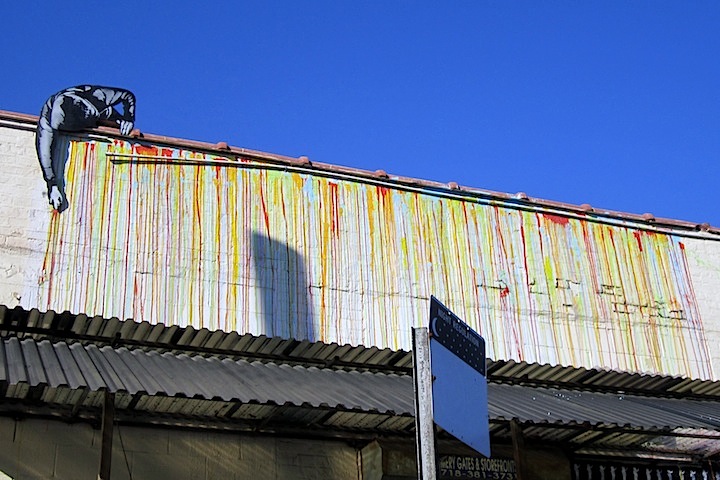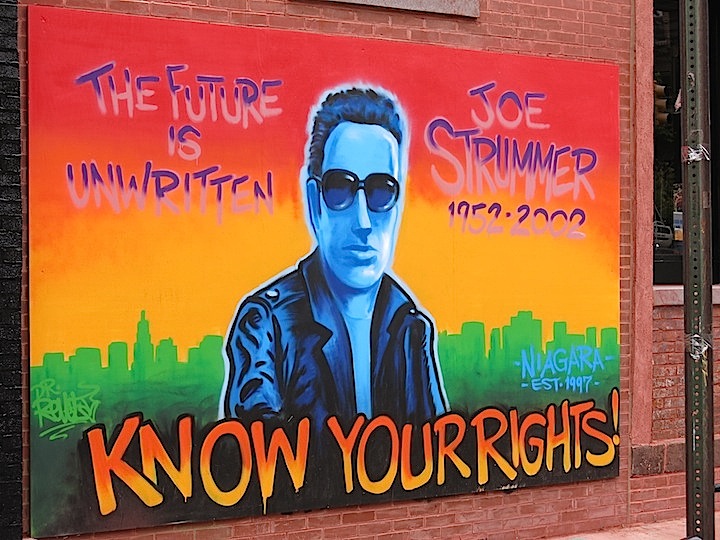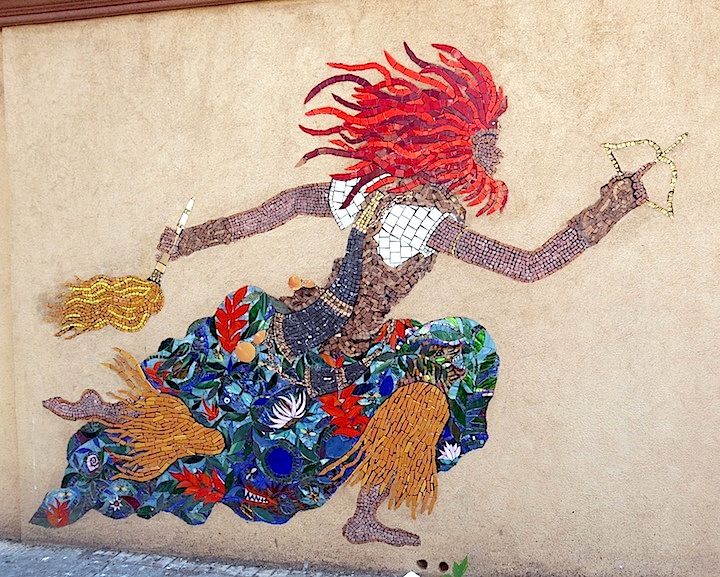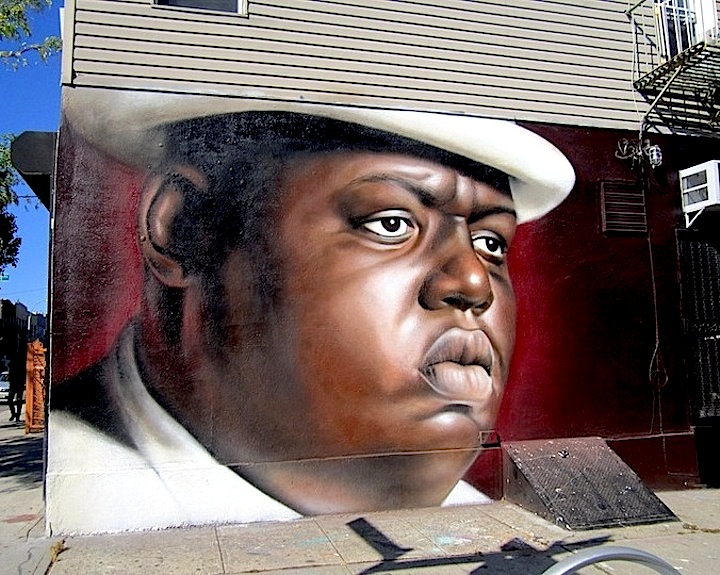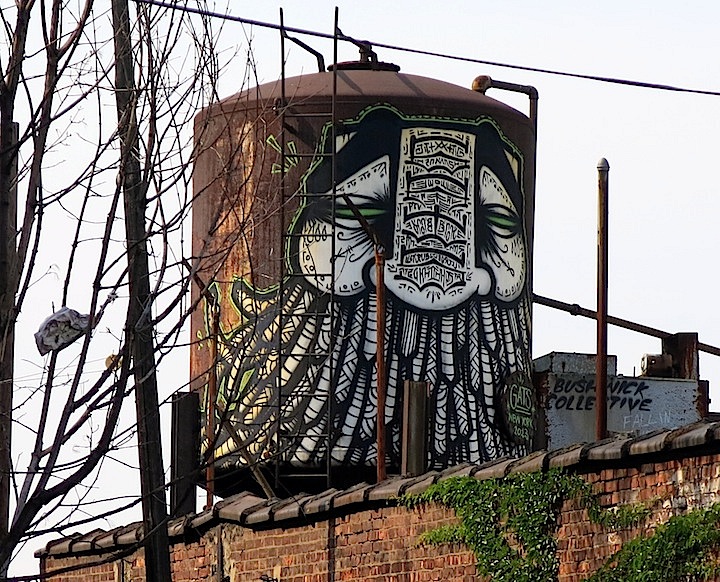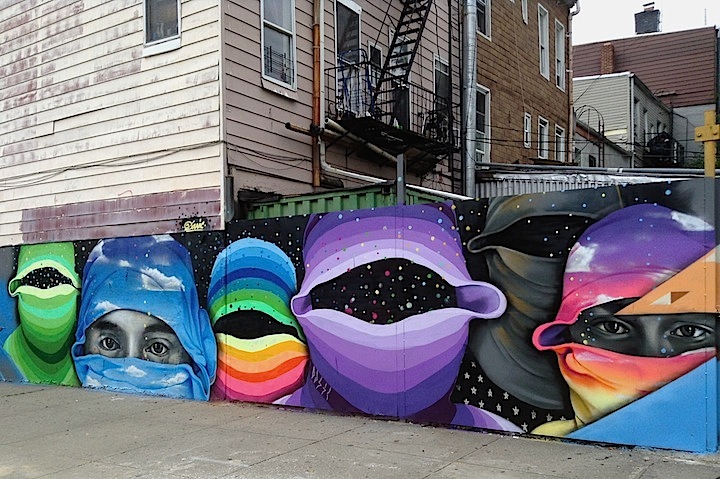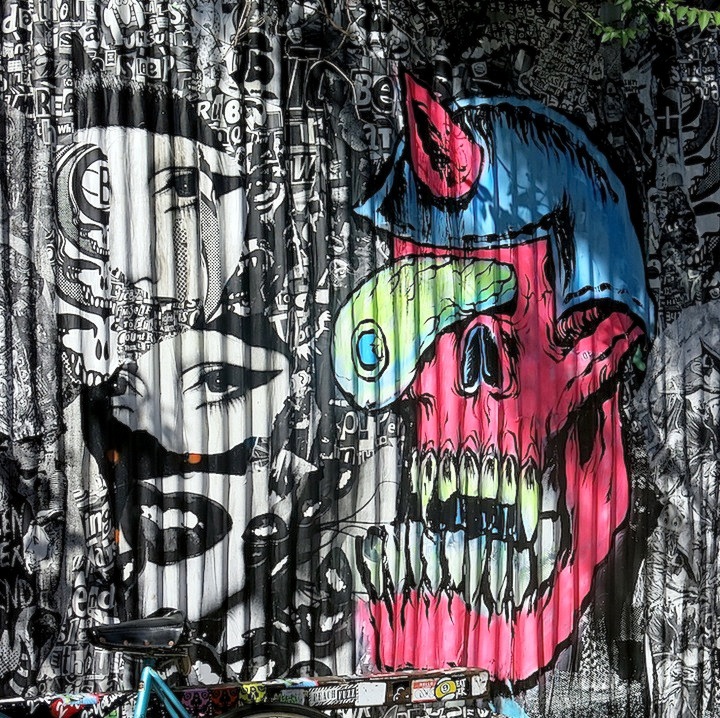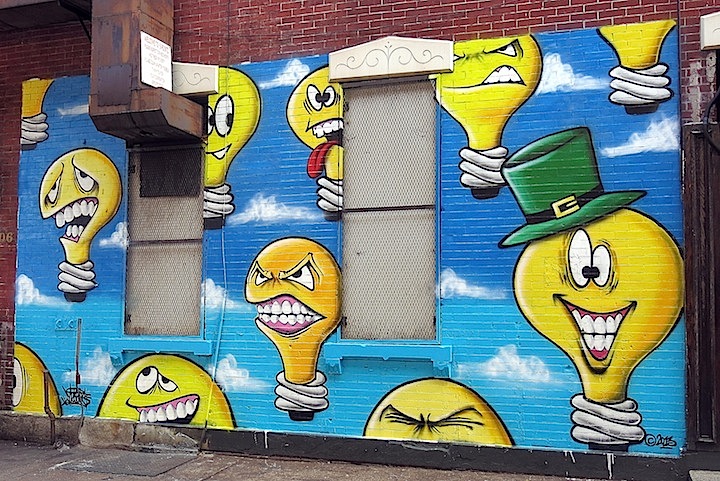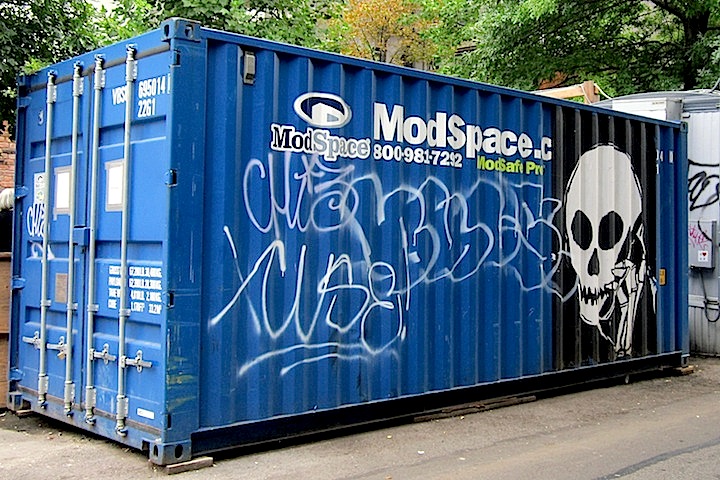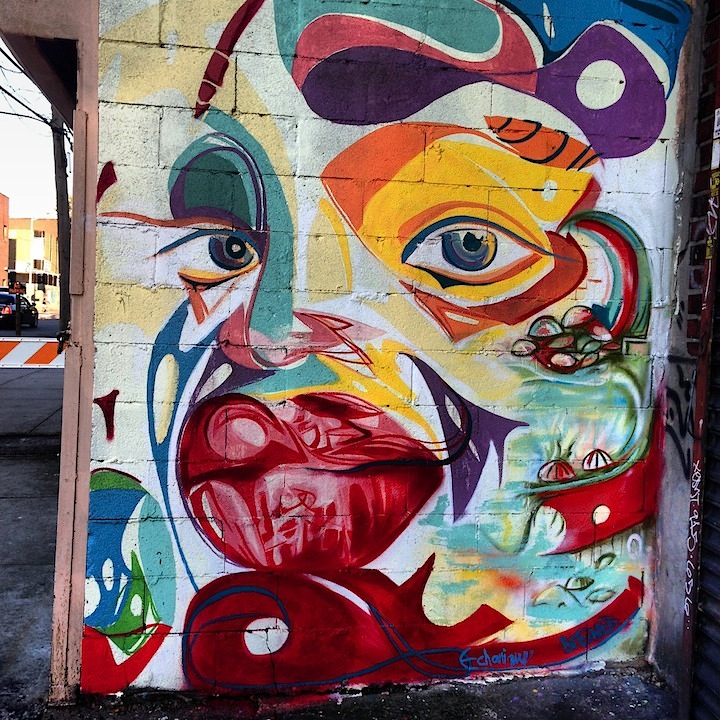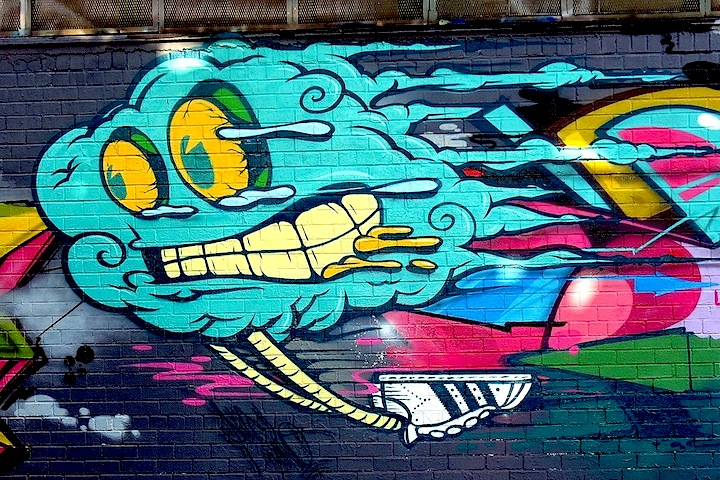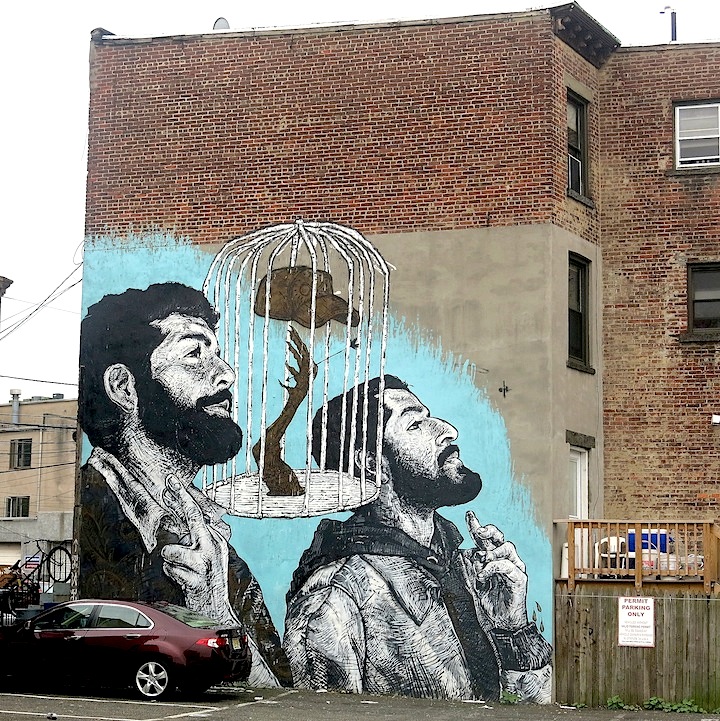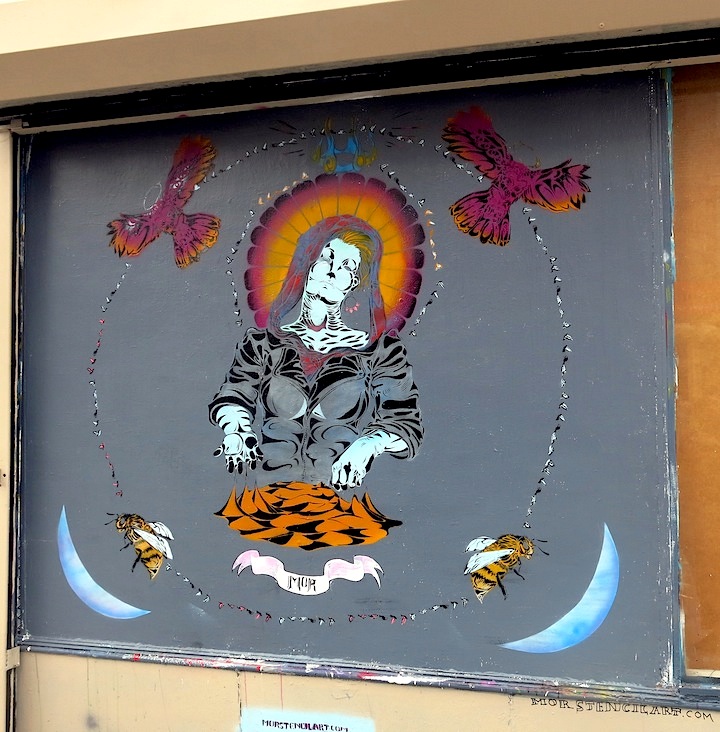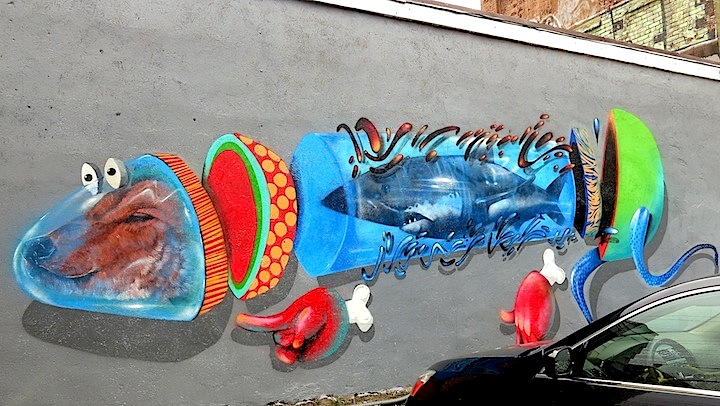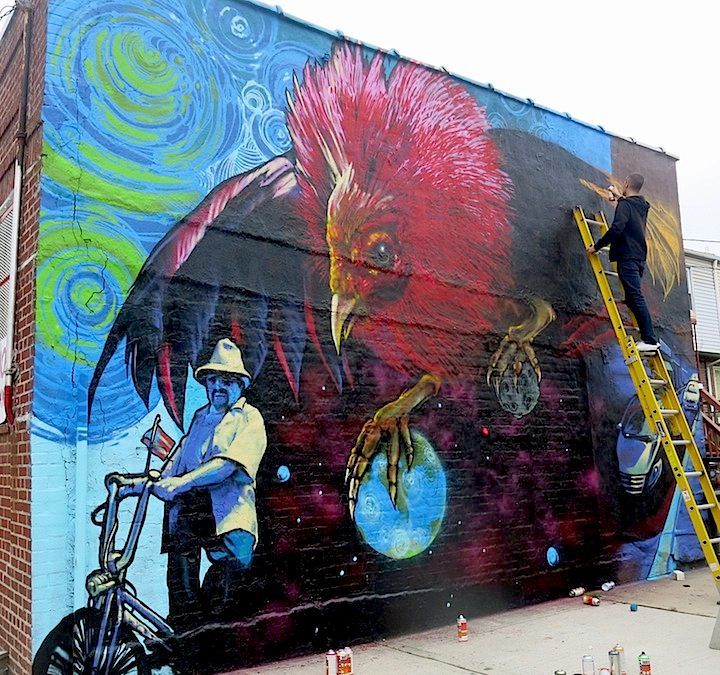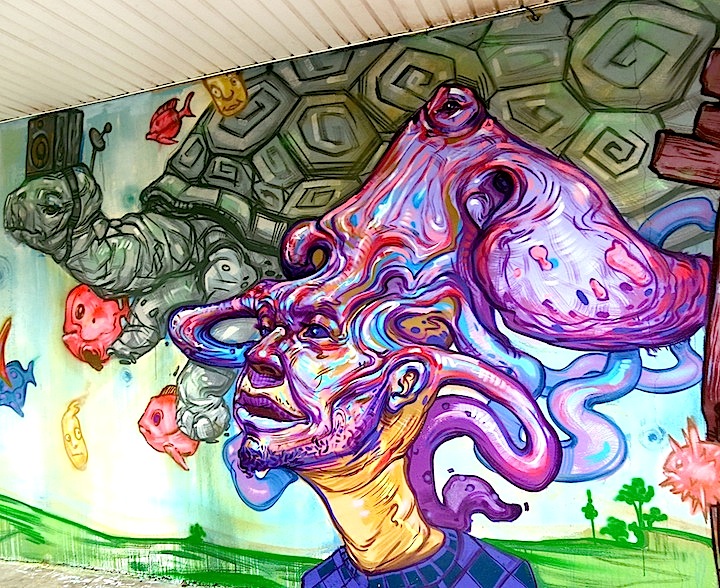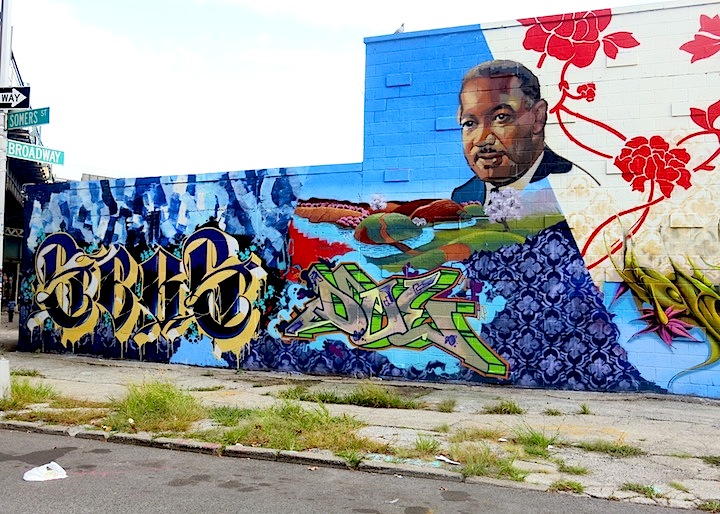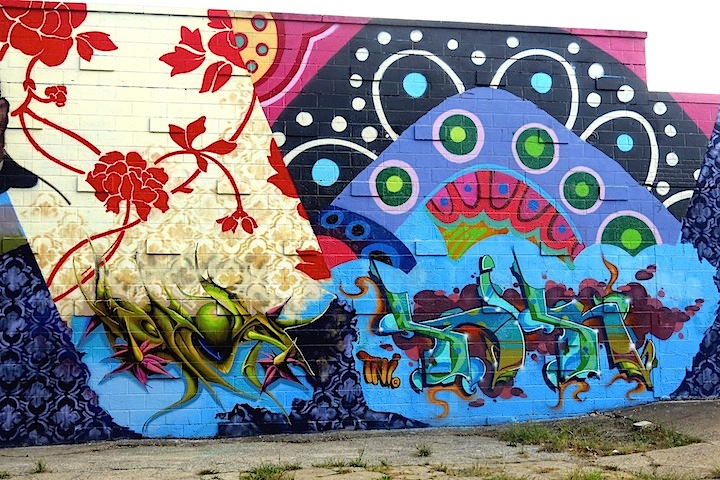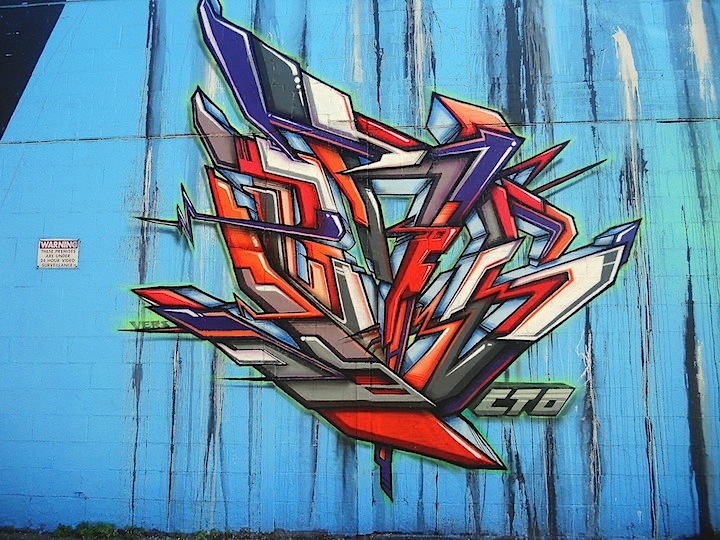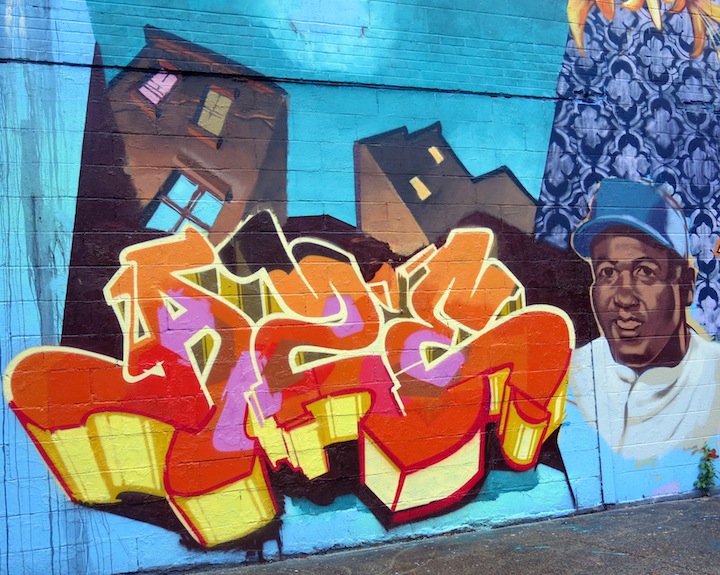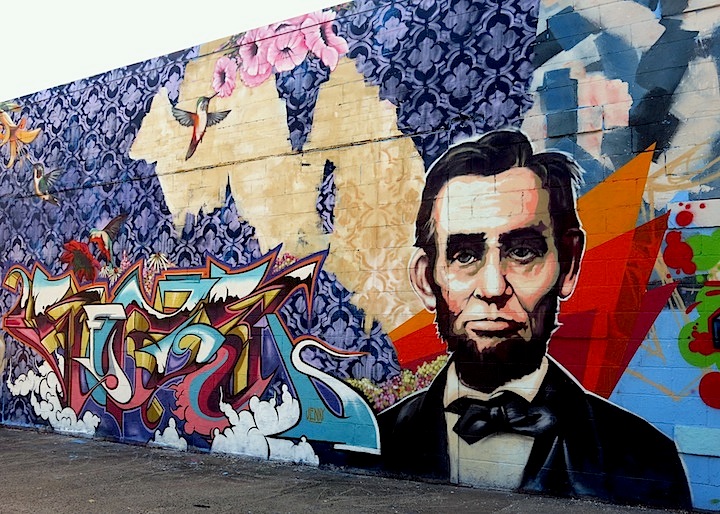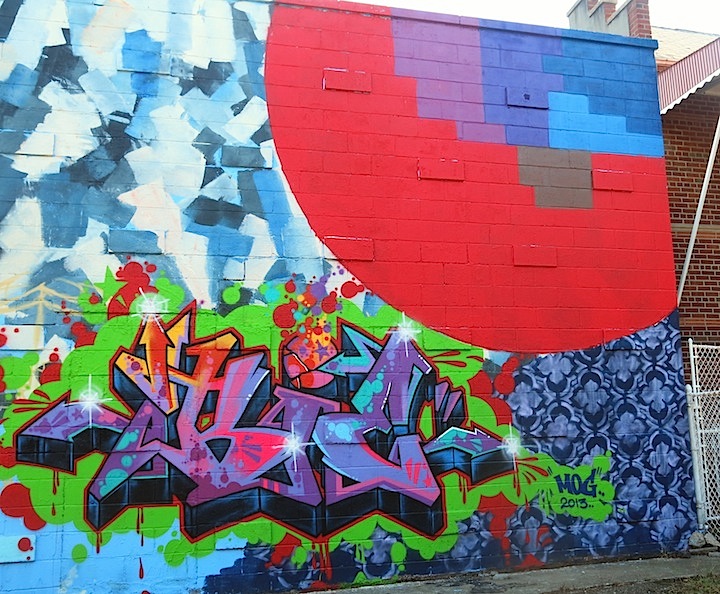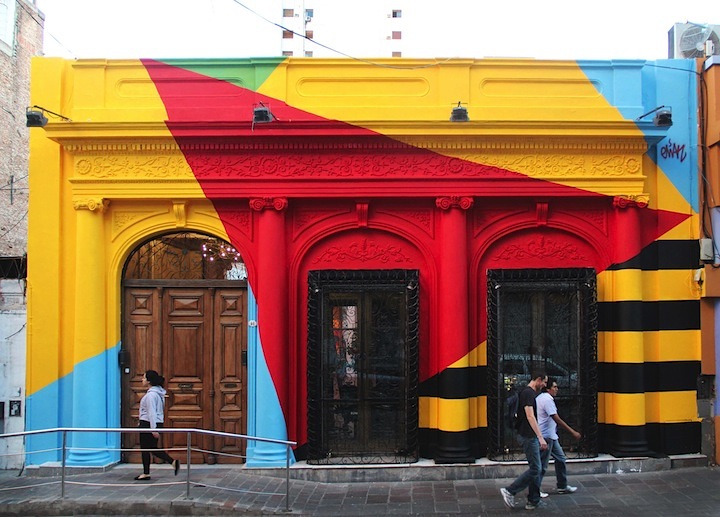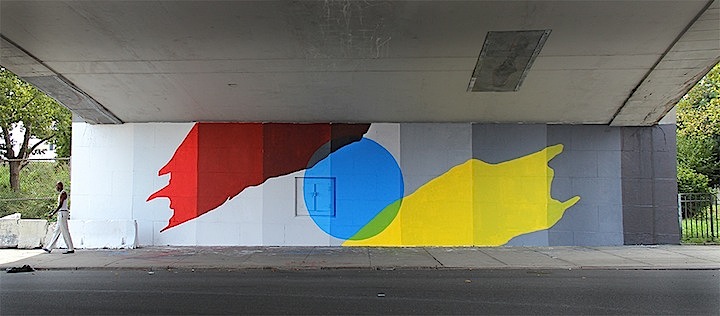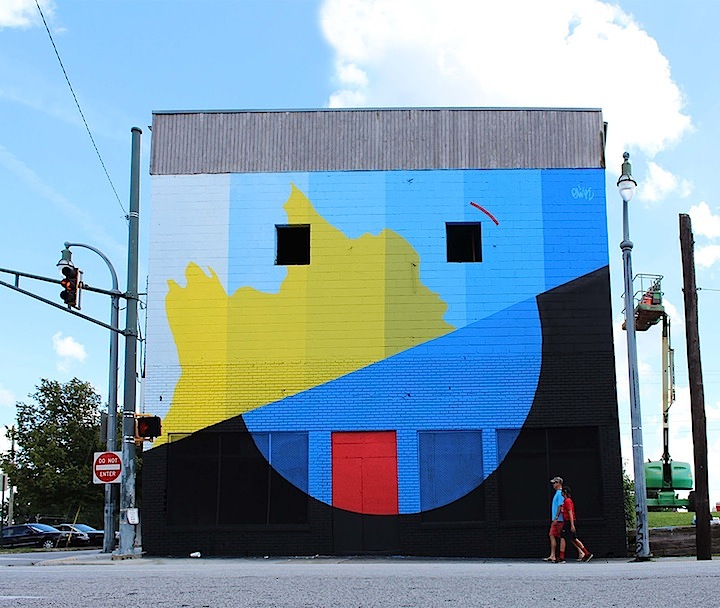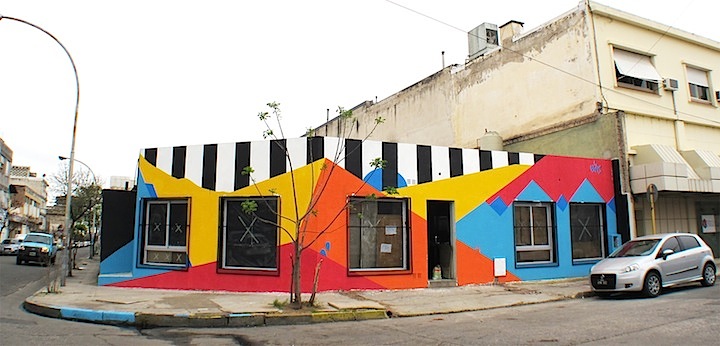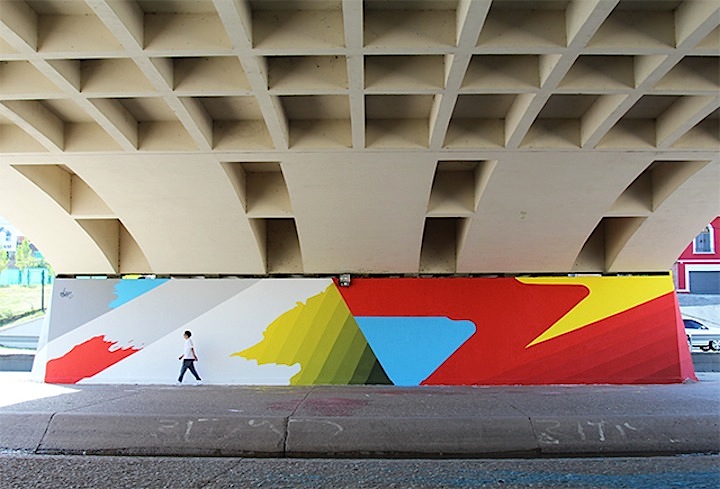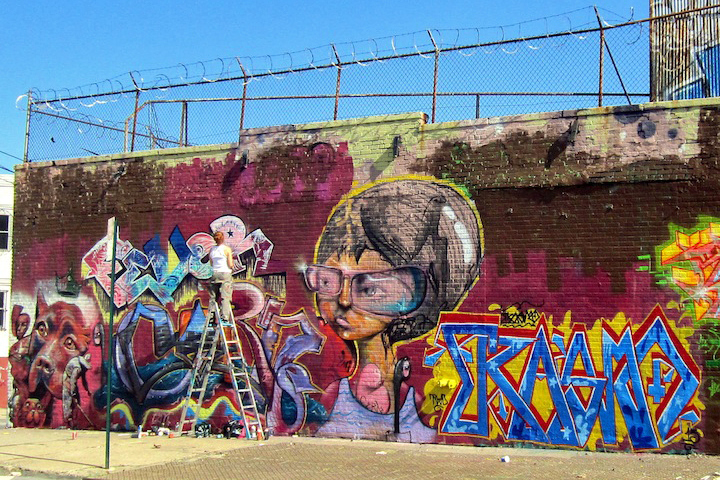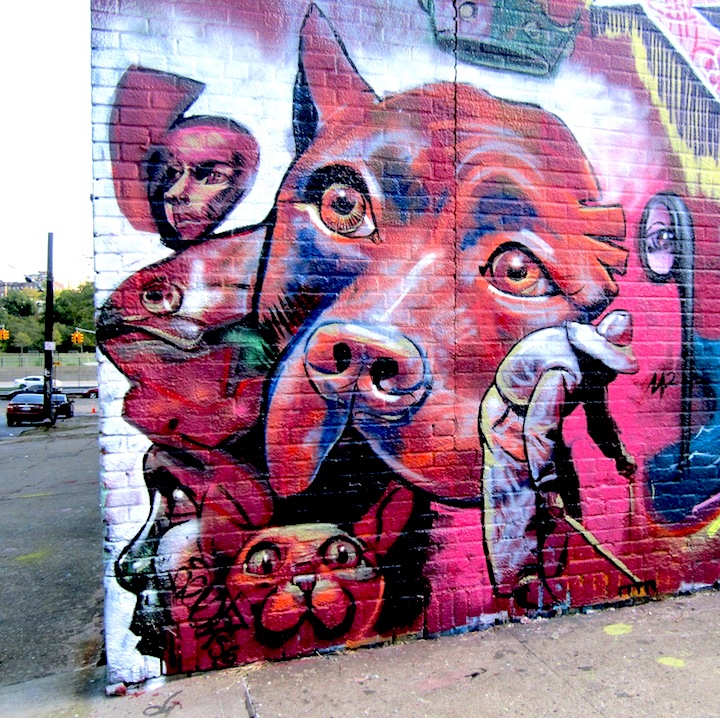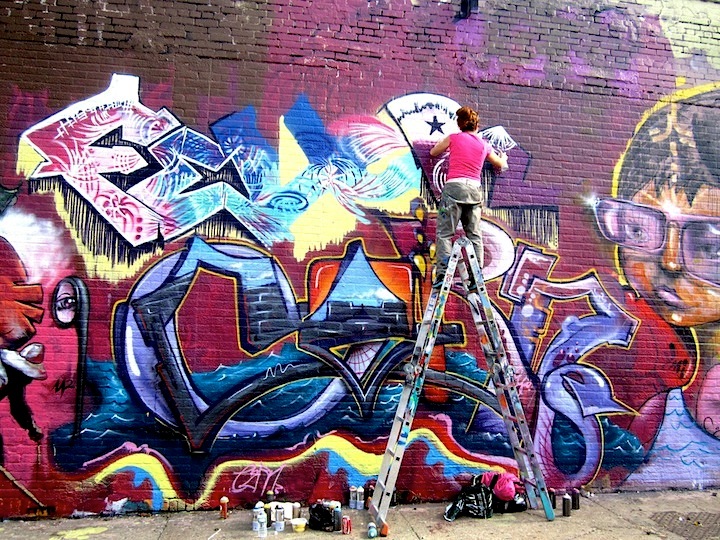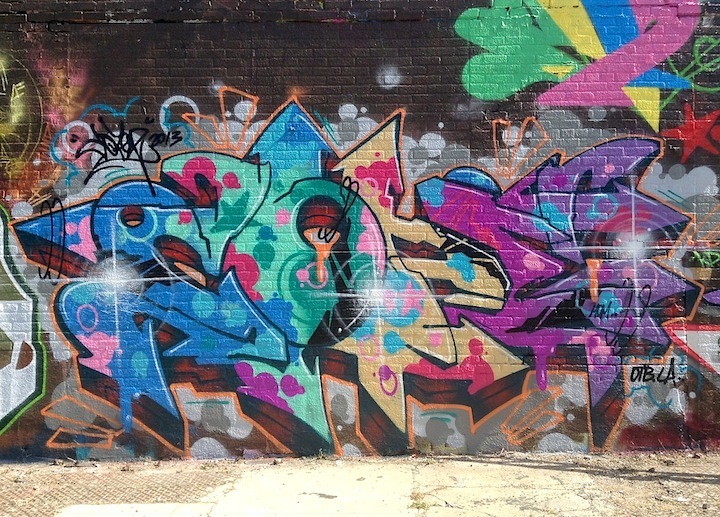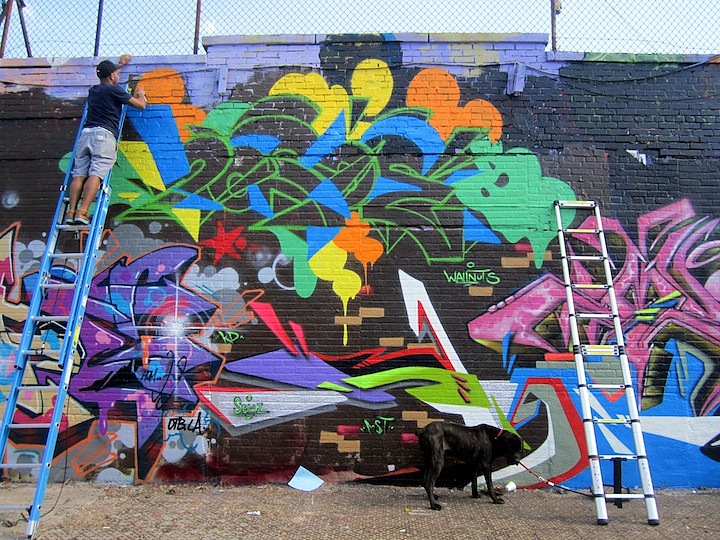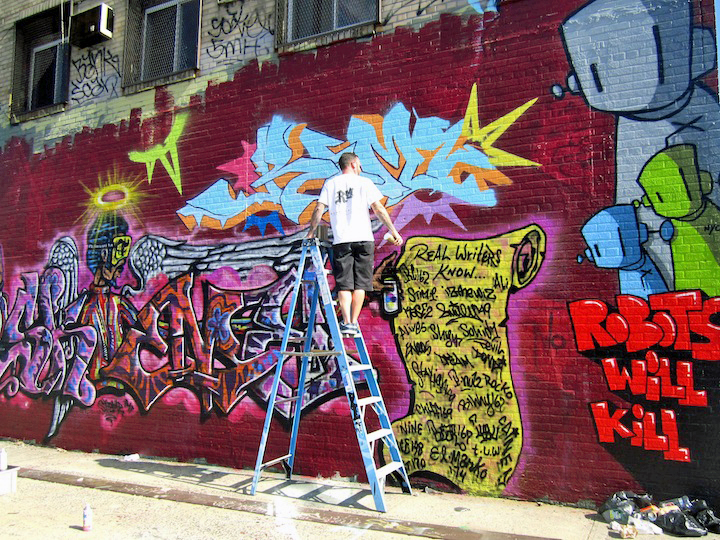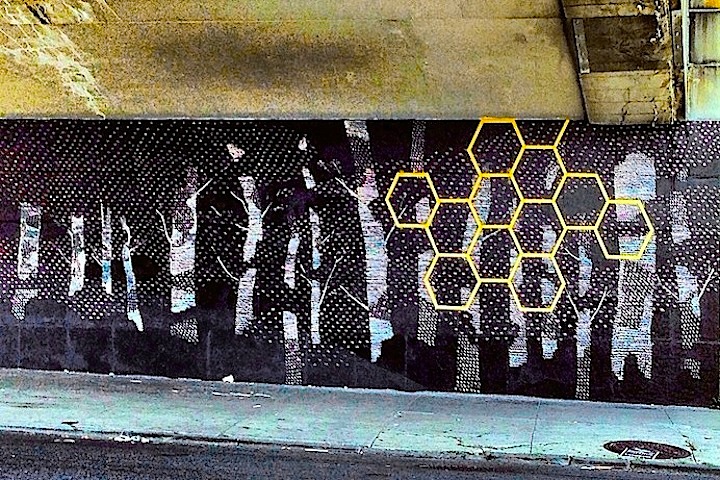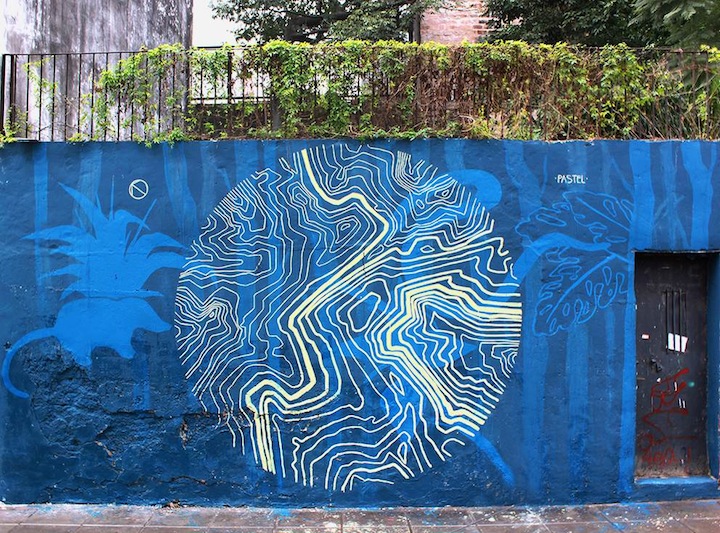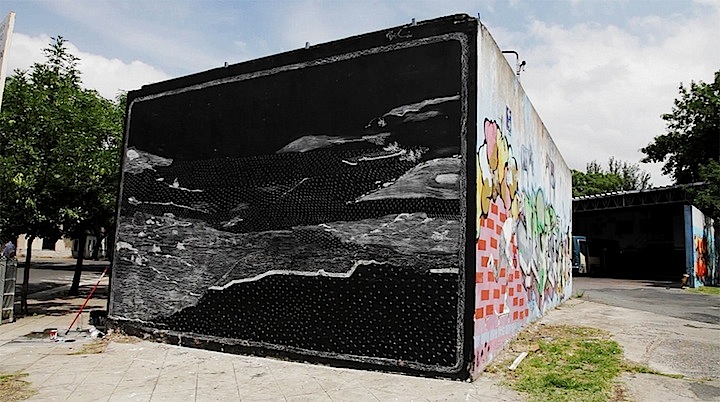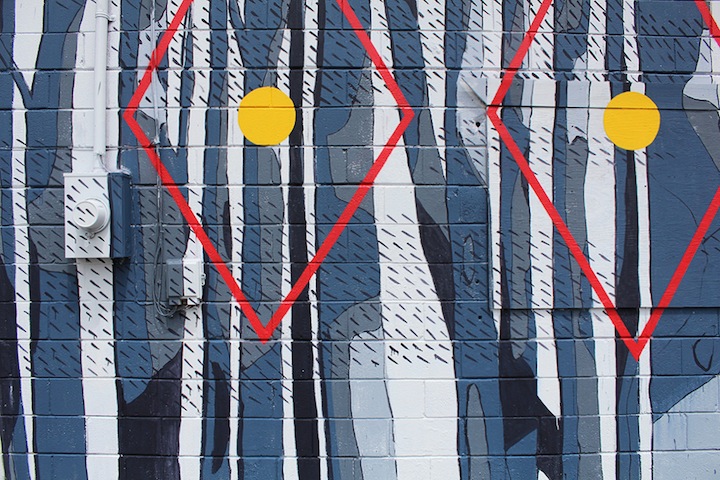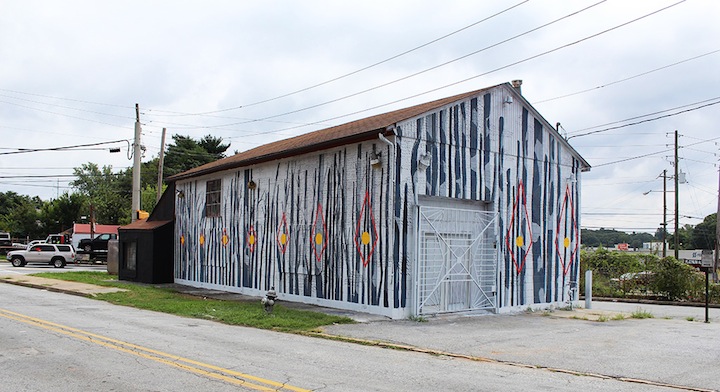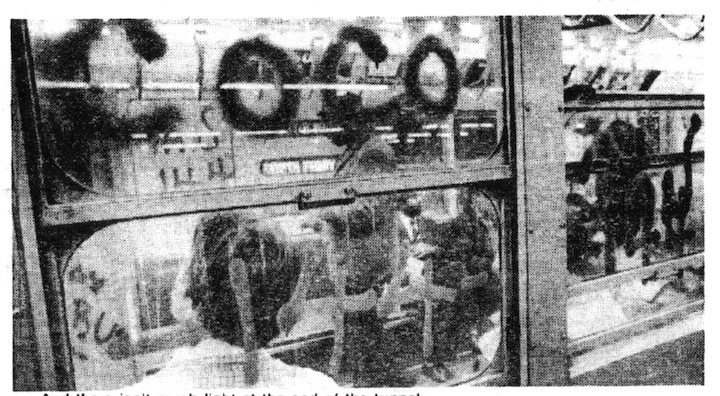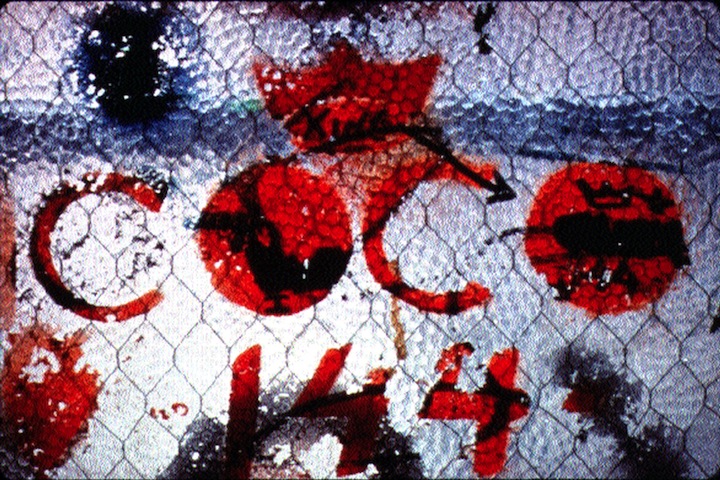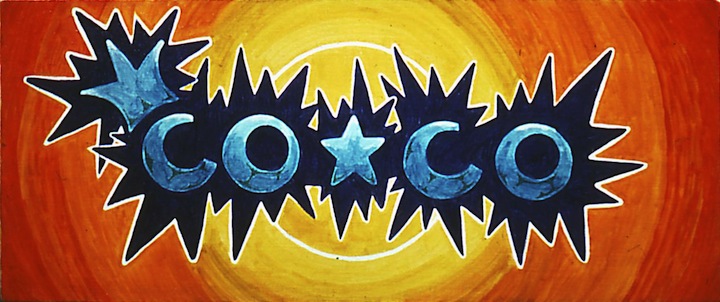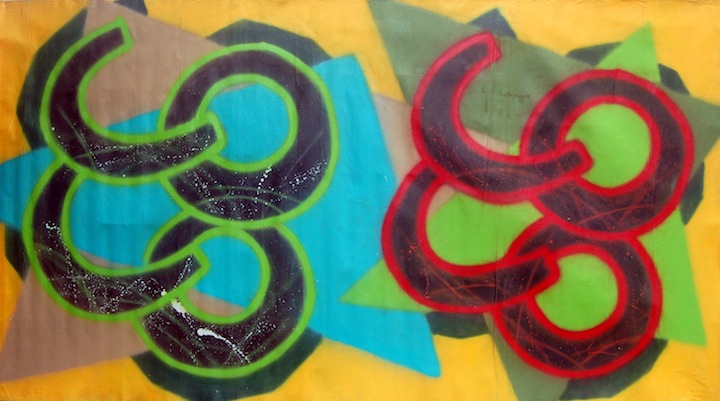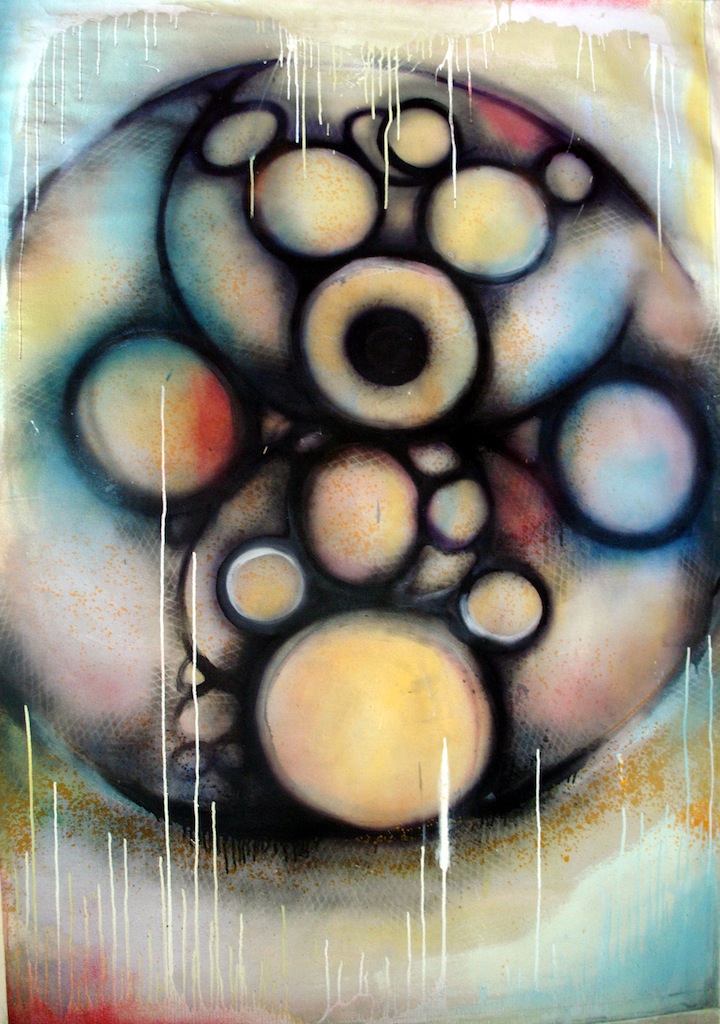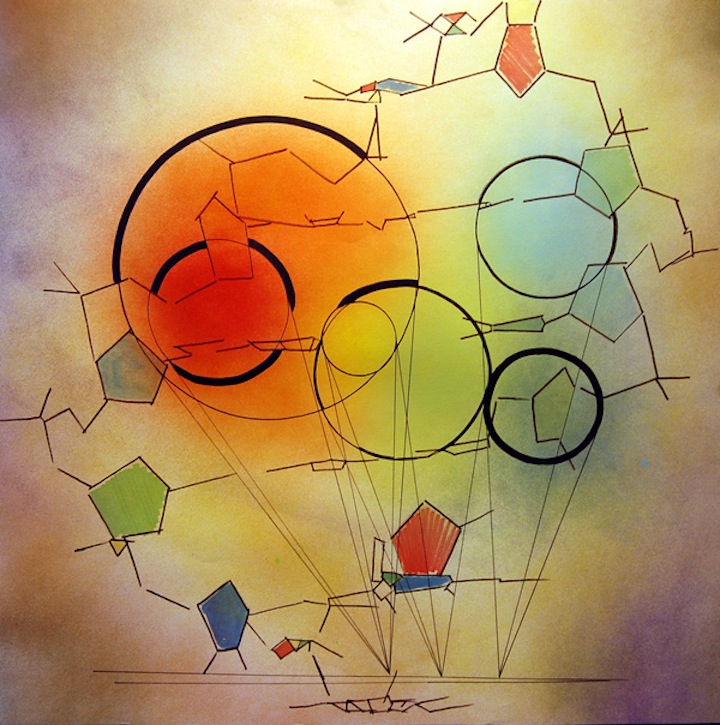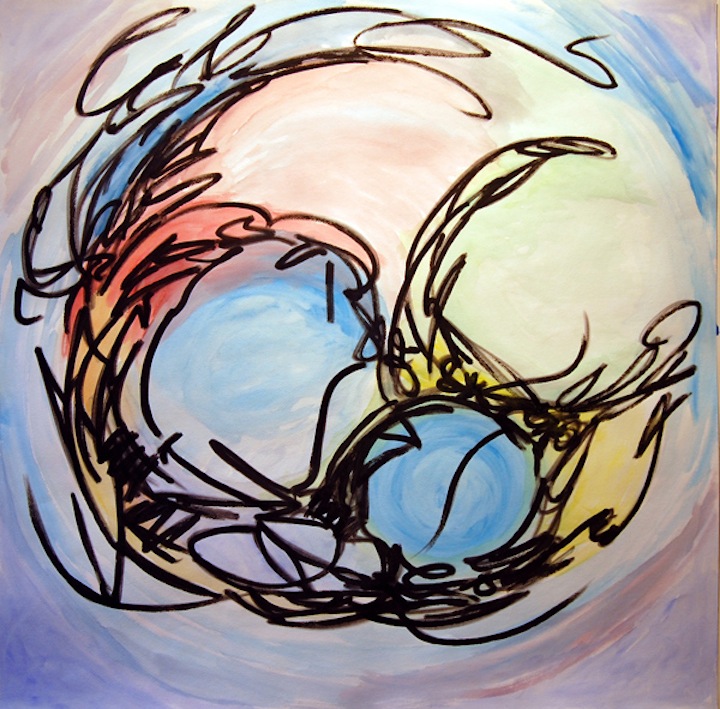A pioneer of graffiti art in Kenya, Wise2 fashions intricate African patterns, tribal masks and ancient writing systems — particularly Sanskrit — onto huge walls. With an increasing global presence, he recently brought his skills to Bushwick, Brooklyn, where we met up:
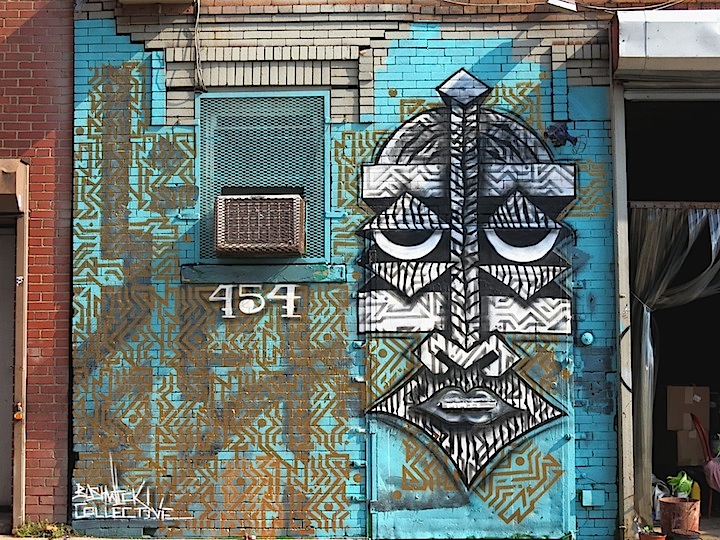
When and where did you first get up?
About ten years ago, I started tagging my name in my neighborhood in Nairobi, Kenya. I got started the way most writers do — with basic lettering.
What introduced you to the graffiti culture?
The movie Style Wars.
Have you ever been arrested for graffiti?
I was close to being arrested. But in Nairobi you can bribe your way out.
What is the attitude of your family towards what you do?
They’re cool.
What percentage of your time is devoted to art?
All of it. I especially love street art, and if I am not painting, I am researching and checking out other artists and their art.
What is your main source of income?
I earn money from commissions. I have a bunch of corporate clients that keep my art moving.
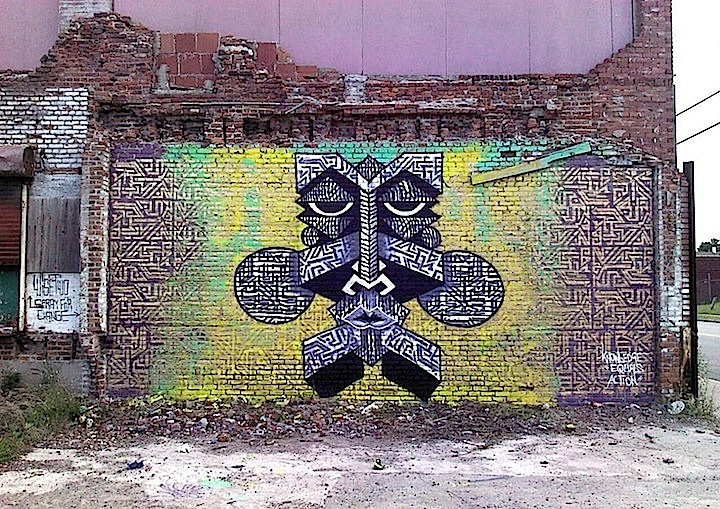
How do you feel about the link between the corporate world and the street art world?
I don’t mind working for corporations, as long as my clients respect my creativity and allow me to express myself without any hindrances.
Is there much of a street art/graffiti divide back in Kenya?
No. There are just a few of us and we respect each other.
Have you any thoughts as to why the art world is hesitant to accept graffiti and street art as legitimate art forms?
We street artists are the most dangerous folks out there. We mix with everybody, not just the elite. We cross classes and cultures. And if we get into the art world, we’ll destroy it…in a good sense!
Do you prefer working alone or collaborating with others?
Both. I love to collaborate, but these days I prefer working alone because I want to continue to develop and cultivate my own creativity.
Do you have a formal art education?
No, I’m self-taught. I studied Philosophy and Law.

What inspires you these days?
Ancient civilizations, hieroglyphics and Arabic writing.
Have you any favorite artists?
Retna. He is one amazing artist. I love what he does.
Are there any specific cultures that influence your work?
I’m influenced by a lot of ancient cultures. But I am mainly interested in establishing a strong cultural base of my own. I don’t want to emulate other cultures, but rather learn from them — so that they can help my body of work grow gradually.
Do you work with a sketch-in-hand, or do you just let it flow?
I often work with a sketch in hand, but I don’t follow it exactly.
Are you generally satisfied with your finished product?
Often I love it. Other times I think I could have done better.

Have you exhibited your work in a gallery setting?
I haven’t yet. The street is my primary gallery, the largest and best gallery any artist could have. But I’m open to the idea of exhibiting my work in a formal gallery setting.
What do you see as the role of the artist in society?
It is to inspire. And it is a very crucial role. An artist has a huge responsibility. What he puts out there reflects on his character and on his society.
How do you feel about the role of the photographer and blogger in the street art scene?
Their roles are pivotal when it comes to street art; we need more bloggers and photographers.
What’s ahead?
Traveling and painting, researching, and, eventually, exposing my work in galleries, as well.
What do you think of New York City?
I love it. The whole world is here. In the past few weeks, I’ve met folks from everywhere.
Interviewed by Lois Stavsky; photo 1 at the Bushwick Collective by Dani Mozeson; photo 2 courtesy of the artist; photo 3 with Joel Bergner in Bushwick by Tara Murray; photo 4 close-up from collaborative wall in Bushwick by Lois Stavsky
